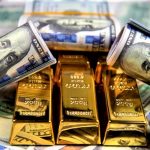Japanese yen is trading at its highest level since 1986, 161.73, set on Monday.
The Japanese yen (JPY) extended its losses on Tuesday, which could be ascribed to the stronger US dollar (USD). The USDJPY pair is trading approaching a new low of 161.73 since 1986. However, the rhetorical intervention by Japanese officials may minimize the JPY’s downside risk.
Japanese Finance Minister Shunichi Suzuki, the government’s stance on foreign exchange remains unchanged.
Japanese Finance Minister Shunichi Suzuki indicated on Tuesday that he is “closely watching FX moves with vigilance.” Suzuki refrained from commenting. Reuters reports that the government’s stance on foreign exchange remains unchanged.
The US dollar strengthens due to increasing yields and rising prospects of Fed rate reduction in 2024.
The US Dollar (USD) ended its three-day losing run as US Treasury yields rose on increased anticipation that the Federal Reserve (Fed) will lower interest rates in 2024. Traders await Federal Reserve Chairman Jerome Powell’s speech on Tuesday.
Daily Market Movers: Japanese Yen falls as US Dollar gains ground.
On Monday, OCBC strategists Frances Cheung and Christopher Wong reported that “USDJPY continued to trade near recent highs.” This is also around the peak level since 1986. There are predictions that Japanese authorities will interfere soon. While the level of JPY is one thing to examine, policymakers also focus on the rate of devaluation, as the goal of intervention is to reduce excessive volatility.”
The US Manufacturing Purchasing Managers Index (PMI) fell unexpectedly to 48.5 in June from 48.7 in May, missing the prediction of 49.1. This score represents the third consecutive month of decreased manufacturing activity and the lowest level since February, according to data released on Monday.
In the second quarter, Japan’s Tankan Large Manufacturing Index rose to 13 from 11. The indicator rose to its highest level in two years, reflecting an improving economic outlook. Meanwhile, Japan’s Jibun Bank Manufacturing PMI for June was revised marginally lower to 50 from a preliminary reading of 50.1, but the index remained expansionary for the second consecutive month.
On Friday, the Federal Reserve Bank of San Francisco President Mary Daly stated that monetary policy is effective. However, it is too early to predict when it will be prudent to lower interest rates. According to Reuters, Daly added, “If inflation remains sticky or slows, rates will need to be higher for a longer period.”
On Friday, the US Bureau of Economic Analysis revealed that US inflation fell to its lowest annual rate in more than three years. The US Personal Consumption Expenditure (PCE) Price Index rose by 2.6% year on year in May, down from 2.7% in April, meeting market forecasts. Core PCE inflation also increased by 2.6% year on year in May, down from 2.8% in April, in line with expectations.









